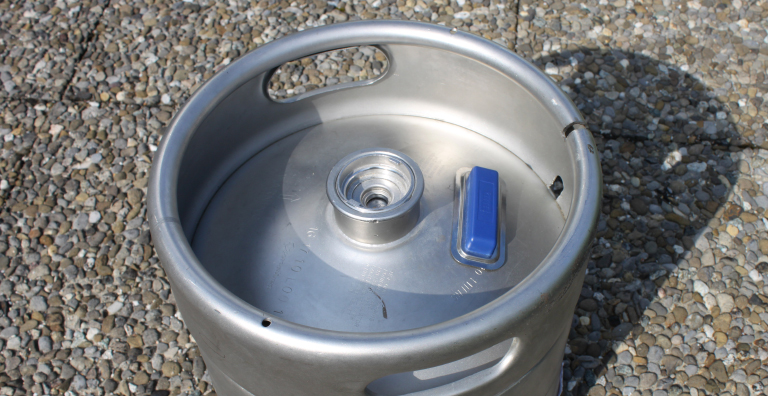Short Guide to RFID Tag Read Range — Eight FAQs
RFID tag read range is one of the first performance metrics organizations consider when selecting a tag for their new RFID-based business process. But beyond the number, what else do you need to know about tag performance?
Read range shouldn’t be the only consideration when selecting an RFID tag.
Read range is a vital component of RFID tag capabilities, but it alone cannot determine the quality of a tag’s performance. To fully understand if a tag can actually work for a use case, factors like antenna, reader signal/power, mounting material, surrounding material, whether or not a tag is embedded, and more have to be considered.
To understand why you need to consider more than just read range for your RFID application, explore the answers to these eight FAQs about read range.
Note: In this blog, we are talking strictly about passive RFID tags.
#1. What Is Read Range?
Read range is the distance from which an RFID tag can be detected. The read range expresses the distance from which the tag receives just enough power to be activated to send back a signal to the reader.
#2. How Is Read Range Determined?
Generally, the manufacturer spec sheet includes RFID read range information.
It’s important to realize that the manufacturer tests their tag in highly favorable, repeatable laboratory conditions: oriented properly in a low humidity, room temperature area with a high-powered antenna, etc. In other words, the environment is as ideal as it can be with a fixed set of conditions. This is simply the nature of testing a tag’s read range. But when you take the tag into the real world — in a different set of conditions — the tag will naturally perform differently.
This is often a problem because if you need a tag that reads at 15 feet, for example, a tag with a 15-foot read range on the spec sheet may not suffice because of material, environmental and other conditions.
For example, in the real world, users have handheld readers with lower power and a smaller antenna than a fixed reader, which means the energy they can send and collect is much smaller – thus, the tag has a shorter read range.
So, it is often the case that a tag with a longer maximum read range will be needed than the product spec sheet might lead you to believe.
A shorter read range typically translates to a smaller footprint and lower cost. So, most incline to get the tag that exactly meets spec — but in the real world, it comes up short. It’s much better to “round up” with your tag. This is because, in most cases, the real world degrades the performance of the tag in relation to perfect lab conditions.
#3. What Is the Maximum Read Range?
The maximum read range is the longest distance the tag will send a detectable response signal under ideal laboratory test conditions, which includes the maximum strength query signal from the reader allowed by regulations.
Generally, the bigger the tag, the longer the read range. But there are practical limits to this.
At Vizinex RFID (an HID Global company), one of our largest tags is 5.7” x 1.48” x 0.27”and reads at 100 feet. This is the upper limit for read range on commercially available tags at this time. In many applications, though, a tag with a smaller footprint is preferred — for example, instrument tags.
For a specific RFID tag, the maximum read range is generally the read range listed on the manufacturer’s spec sheet. As mentioned, the tag in real world conditions will perform less than the maximum read range on the spec sheet.
If you’re not getting the maximum read range, you should also check to see what reader power you’re on. Reader power is often reduced adjusted to help prevent reading unrelated tags that are within range to be picked up.
#4. How Important Is Read Range to Tag Selection?
It’s essential you have enough read range to detect the tags you need to detect in the application.
Read range is important to tag selection, but this factor is application specific and should not be solely relied on. System performance is not exclusively based on read range.
To determine the appropriate tag read range for a project, users will need to have an in-depth understanding of the application and the goals of the data collection task. It is likely that some experimentation with some alternative tags will help in making the correct tag choice for the materials involved and the one in question.
#5. Does Long Read Range Equal Higher Performance?
For RFID tags, higher performance is referring to higher reliability of reads. In other words, when an object is in the proximity of the reader, is it detected? Does the reader reliably detect every tag it’s supposed to?
Read range certainly contributes to this level of reliability. A longer read range means the tag is more powerful and more likely to be picked up.
Because of this, many people use read range as a primary RFID performance metric — using it as a proxy of the performance of a tag and giving users insight about how a tag can be used. While this is helpful information, long read range doesn’t always equal higher performance. It depends on the application. For example, in some cases, frequency response is more important to reliability than maximum read range.
The environment you’re in will affect the readability of the tag in a number of different ways. Longer read range can’t always compensate for those other factors. These factors might prevent the tag from being picked up at all, in which case the read range doesn’t matter.
Read range is one factor that helps maximize the read reliability of a tag, but it doesn’t give the complete picture of how good or bad an RFID tag performs.
#6. Is Longer Read Range Always Better?
There is a trade off with read range, tag footprint and cost. If you want or need more read range, the tag will likely be bigger and, as a result, more expensive. So, what’s “better” for your application? It’s all about determining an acceptable trade off and ROI for your application.
In some situations, long read range is helpful to identify certain objects within a certain area. However, if other tags with long read ranges are also near that area, they may be unintentionally detected. This issue calls for stray management, which is defined as controlling unrelated tag reads during a project. Detecting unrelated tags during a read can be detrimental and is a disadvantage of having a longer read range.
#7. What Factors Impact Read Range?
There are two main factors that impact read range:
1. Size of the Antenna
The read range is proportional to the amount of energy it can collect from the inbound signal. A passive tag has no internal power, so it gathers power to send a response from an incoming query signal. The bigger the antenna, the more power it can collect to send a strong response.
2. Material on Which the Tag Is Mounted
The type of material a tag is mounted on can affect the read range significantly. Many tags are designed to be mounted on a particular material — a high dielectric plastic, paper or corrugated, metal or other conductive surfaces, hanging in free air, etc.
RFID tag design can be engineered to either take advantage of material benefits, or to compensate for deficiencies that a material may cause in the read range process. If the tag is mounted on a material other than the one it was designed for, the read range can be substantially reduced. Users must be careful to choose a tag designed for the surface on which it will be mounted.

#8. What Else Should I Consider Beyond Read Range for Tag Selection?
1. Bandwidth
A tag may have a very long, strong nominal read range for a given application, but the frequency band for which it provides that long range its frequency is extremely narrow. It might respond well at a limited frequency range but performs poorly on other frequency bands. The query signals sent by readers bounce from frequency to frequency within the RFID band (902-928 MHz in the US).
Some tags have a very strong response to a very narrow range of query frequencies. They have a ‘peaky’ response curve, tall and narrow. Other tags have a flatter response curve, and the tags respond equally well to all query signals within the band.
In some cases, tags with flatter response curves provide significantly better response rates than tags with better nominal read ranges and a response curve in a very narrow set of frequencies.
2. Directional Response
Some tags respond much better when oriented one way than if rotated 90 degrees from the broadcasting antenna. In some cases, it doesn’t matter if the tag has a nonuniform direction response because it will automatically be oriented relative to the reader. However, you might not know for sure if the tag will always be oriented the right way.
3. Business Processes
The most important factor to consider in the tag selection process is does it serve the need of your unique business process? The tag you choose will need a read range for your specific application and project which is why it’s such a high priority. Then, you should consider other factors that impact the system’s performance, like durability, footprint, material compatibility and the environment of the tag. You need a tag that has enough read range for your application but also weighs other business process considerations — otherwise, you might not even achieve the read range you need.
Explore other common RFID-related questions and answers.
Conclusion
Read range plays a key role in the life of an RFID tag and is one of the factors that determines a tag’s overall use. However, relying on read range alone will direct you to choose a tag that may not actually work for your use case. It’s important to look at the whole picture so you can choose an RFID tag based on your specific needs.
To learn more about HID Global’s breadth of asset tracking RFID tags, check out our latest IDT Asset Tracking & Logistics Tag Comparison Chart.
Nick Iandolo is an experienced Senior Marketing Strategist specializing in Content Marketing and Corporate Communications Writing, primarily for market-disrupting technology organizations. His work has been featured in publications such as Morning Consult, NewDesign Magazine UK, SmartCard Identity News, and Construction Outlook. Nick is also a Spartan Race athlete, and lives just outside of Boston Mass with his wife, daughter, and Golden Retriever.
